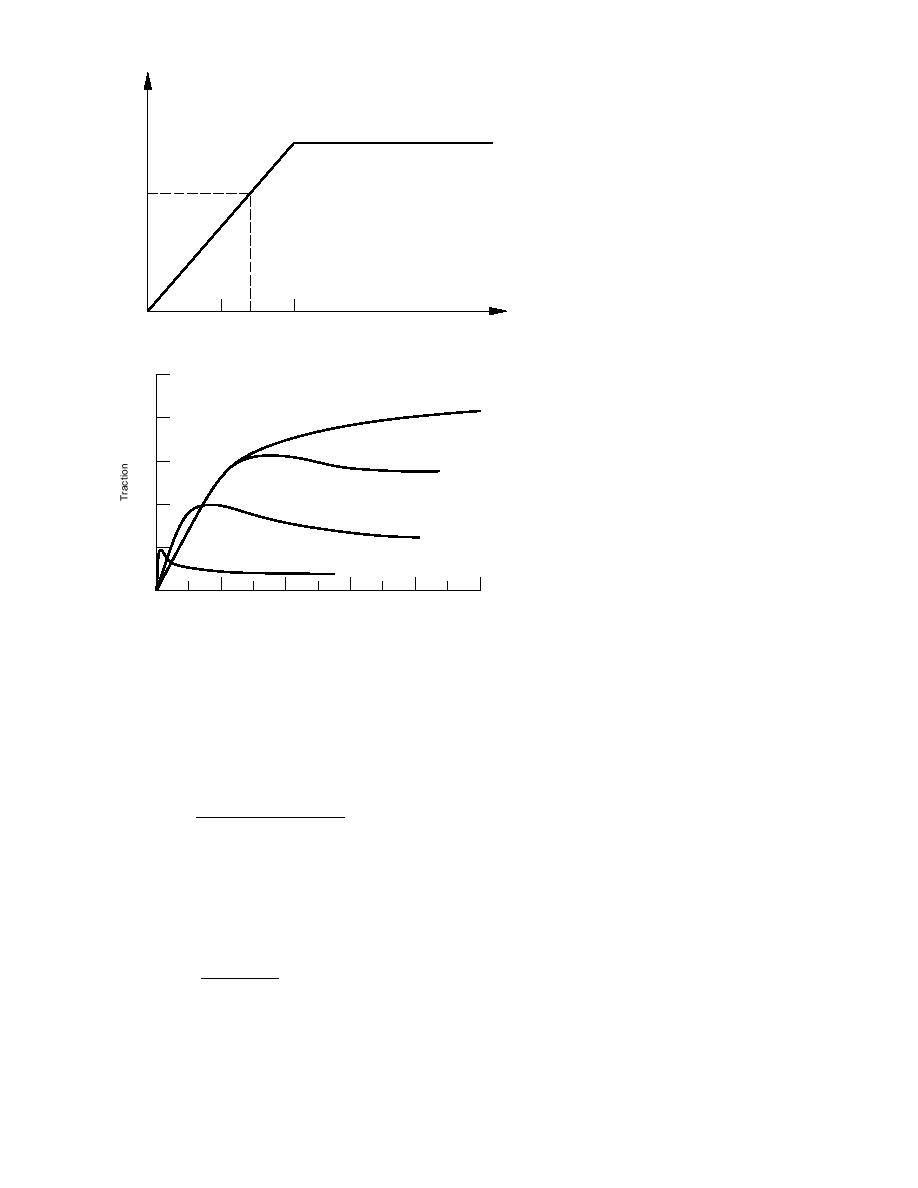
Tgross
R
R
= R terrain + R internal
S
ws v
lip = s
vs
0.1
0.2
Figure 17. Idealized tractionslip curve in snow.
Slip
1.0
Loose Sandy Soils
0.8
Dense Sandy Soils
0.6
0.4
Shallow Snow
0.2
Ice
0
Figure 18. Generalized tractionslip curves for
0
20
40
60
80
100
different surface materials.
Slip (%)
The maximum traction in snow occurs at
respectively. We recommend that this velocity cor-
about 20% slip, and
rection be applied before other effects are taken into
The tractionslip curve is nearly linear be-
account. Generalized tractionslip curves for differ-
tween 0 and 20% slip (Fig. 17),
ent materials are shown in Figure 18. These varia-
we claim that the slip when operating in snow
tions will need to be considered when or if the full
can be calculated from the following equation:
traction curves are incorporated into future mobil-
ity models.
0.2 (Rterrain + Rinternal )
Slipsnow =
(29)
Tgross
INTERNAL MOTION
RESISTANCE
for Tgross ≥ Rterrain + Rinternal.
Internal motion resistance, as mentioned ear-
Once the slip has been calculated, the estimated
lier, is the force caused by friction within the ve-
vehicle velocity can be calculated using the defini-
hicle (tire deformation, friction in driveline com-
tion for slip:
ponents, etc.). We use the values for Rinternal of
1
wheeled and tracked vehicles as tabulated by
Vs = Ws
(30)
Slipsnow + 1
Ahlvin and Haley (1992). These values (Table 3) are
in coefficient form (the ratio of resistance force to
where Vs and Ws are the vehicle and wheel speeds,
wheel or track weight).
15



 Previous Page
Previous Page
